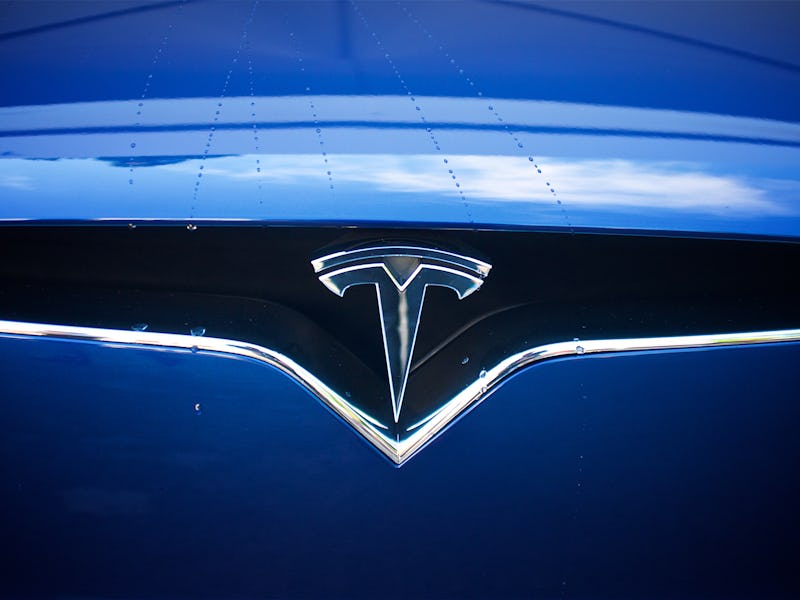Tesla’s next-generation supercar is making more regular appearances. The 2020 Roadster, set to act as the successor to the company’s first-ever car, was spotted outside the Tesla Design Studio in Hawthorne, California over the weekend. New shots demonstrate the impressively sleek design that’s sure to slice through air with ease.
The images emerge after a number of Model 3 reservation holders were invited to convert their $1,000 deposit into a number of pre-built vehicles, an event where CEO Elon Musk signed vehicles and chatted with fans. Perched outside the factory was a new Roadster, with a sleek series of curves moving across the car body. An aerodynamic design is key to extracting the highest performance from the electric car’s battery: while the original Roadster had a drag coefficient of 0.36, the Model S achieved 0.24 while the Model 3 reached 0.23. Tesla reduced the original Roadster’s drag down to 0.31 in 2014 with a retrofit aero kit, but it will be interesting to see how a full redesign fares in terms of efficiency.
See more: Elon Musk Teases 2020 Tesla Roadster Boosts During Battery Breakdown
Tesla is promising over 600 miles of driving from a single charge, thanks in part to the car’s giant 200 kilowatt-hour battery. Musk explained in August that the pack is essentially two Model S P100 packs pushed together. Tesla could achieve this effect without using double the packaging and other components, leading to only an 80 percent rise in volume that pushes to a 4-5 inch rise in height. However, Musk has suggested that the company could save around 10 to 20 percent more on these figures, which could help reduce weight.
The battery will be providing a lot of power, offering 0 to 60 mph acceleration times of 1.9 seconds. Tesla uses a number of techniques to provide these levels of power with its vehicles while maintaining respectable driving range. The Model 3, for example, uses aerodynamic wheel covers as standard, which suggest a 4.3 percent increase in efficiency for real-world testing.
Expect more details about how Tesla plans to squeeze as much as possible out of the new Roadster as its launch date approaches in 2020.
It could prove more impressive than expected, as race driver Emile Bouret said in June that based on his test drive, he believed the 1.9 seconds figure to be a “conservative” estimate.
